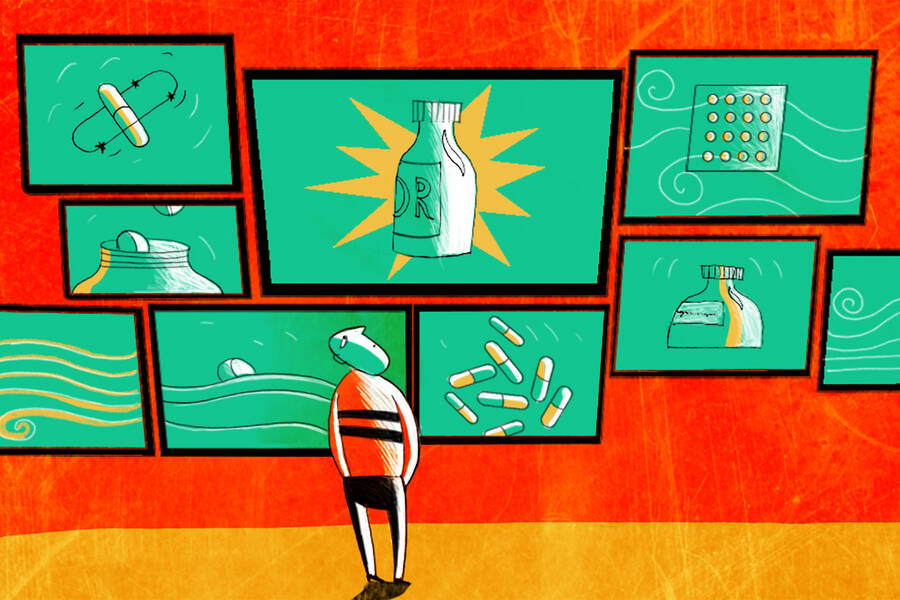Strategy Apr 1, 2025
How America’s News Diet Went from Local to National
While many view the internet as the death knell of local print journalism, the unraveling started decades earlier—with the rise of television.

Yifan Wu
On March 31, 2011, the Harrisburg Patriot-News broke a story that Jerry Sandusky, Penn State’s assistant football coach, was under investigation for allegations of sexually abusing boys.
The news quickly filled national headlines. Sara Ganim, the journalist behind the story, credited the Patriot-News with giving her the time and space needed to chase the winding narrative. She won a Pulitzer Prize for her work the following year.
Ganim joined a long legacy of journalists at local papers uncovering major stories—like the Hartford Courant revealing that the U.S. military was sending soldiers with severe psychological issues to fight in Iraq; or the McCurtain Gazette-News story discovering a plot by a local sheriff and county officials to kill two journalists and hang Black people.
The list goes on.
Yet despite their far-reaching impact, local news is petering out. In 2023, an average of 2.5 local newspapers shut down every week. More than half of U.S. counties now have little or no reliable local-news coverage, and the trend is accelerating.
“Not having that journalism is a real loss for society,” says Michael Sinkinson, an associate professor of strategy at Kellogg who has studied how competition from other media sources has contributed to this decline.
Together with Charles Angelucci from MIT and Julia Cagé from Sciences Po Paris, Sinkinson mapped out how the early rise of television corroded the business of local newspapers and how this process, in turn, enabled national political trends to overtake local politics and ultimately influence voting decisions.
“What it comes back to, most basically, is that the business model of a local newspaper depended on bundling different types of content together, including local news,” says Sinkinson. “Increased competition on elements of that bundle made it harder for them to do their job, and they simply ran leaner operations.”
Here comes television
Television was first licensed for commercial broadcasting in the U.S. in 1941, and it expanded quickly in the 1950s.
The expansion hit a series of technical and engineering challenges in September of 1948, prompting the Federal Communications Commission (FCC) to halt the licensing of new television stations. This “FCC freeze” lasted for four years, during which time the number of television sets in use grew from 250,000 to nearly 17 million.
In all, 108 local television stations had been granted licenses prior to the freeze, while over 700 applications were put on hold.
“This freeze allowed us to leverage a very nice natural experiment,” Sinkinson says. “During those four years, some news markets had seen the entry of television while others had not, and this unfolded quasi-randomly, so we could see the effect on newspapers in these different cities.”
Sinkinson and his colleagues gathered information on the location, height, channel, and power of the broadcasting towers for each television station.
“These different news sources [television and newspapers] could have been complements, where people hear about a story on the evening news and then want to read something more in-depth. Instead, though, we found they were substitutes.”
—
Michael Sinkinson
They used this data to define the geographical area in which a television signal could be received. And then they overlaid the reach of operating television stations on top of a map of local newspaper markets. This allowed them to identify which local newspaper markets were exposed to television prior to the freeze.
The researchers then extracted the number of pages published on four select days per year by each local newspaper, as well as the number of articles published and the categories (weather, international, sports, etc.) of the stories. They also collected circulation numbers, subscription prices, and advertising costs from local papers around the country.
Fewer readers, fewer ads
It was not immediately obvious what effect the rise of television would have on local newspapers.
“These different news sources [television and newspapers] could have been complements, where people hear about a story on the evening news and then want to read something more in-depth,” Sinkinson says. “Instead, though, we found they were substitutes: growing television use led to a decrease in readership, particularly among evening papers.”
Overall, the entry of television led to a 3.1 percent decrease in newspaper circulation and a 3.3 percent decrease in subscription prices. At the same time, advertising rates declined by 2 percent and the overall quantity of advertising in local evening papers dropped by 3.9 percent.
The content of local papers changed, too.
The total number of stories published by local papers dropped by 6.6 percent following the entry of television into the same market. This figure was largely driven by a 10 percent drop in local-news stories. The number of national stories that were included in the local papers, by contrast, did not change significantly.
“In a way, these results are pretty straightforward,” Sinkinson says. “Fewer people were reading the paper, so they made less money from advertising, and then we see the newspaper content shrink.”
Ultimately, the growth of television meant fewer people were receiving local news through newspapers. The papers themselves also published fewer articles about local news, while their national-news coverage held steady.
In other words, America’s news diet started to become more national.
Political fallout
This shift in news-consumption habits corresponds with what Sinkinson calls the “nationalization” of local politics.
He and his coauthors gathered county-level data on elections for the House, Senate, and Presidency from 1932–1964. They found that counties in which local papers were competing with television also had a drop in “split-ticket” voting, where people would cast votes for candidates of different parties—a Republican representative, say, but a Democratic president.
Coinciding with the fall of local-news coverage, how people voted for local candidates in these counties started aligning more closely with how they voted for president.
“Today, almost all levels of politics have become nationalized,” Sinkinson says, “We see the start of this trend in this era.”
Though this shift in and of itself is neither good nor bad, the researchers note, it does raise questions about political accountability at the local level. To the extent voters are ill-informed about local politics, a local official’s political party may prove more important to election and reelection than actual platforms and performance.
A troubling epilogue
America’s media landscape has changed a lot over the last 70 years.
The researchers revisited the local papers that competed with television markets during the FCC freeze and found that, as of 2017, only ten were still operating in print.
The average number of total published stories had dropped 37.5 percent, from 152 to 95; and only 50 of these stories came from original reporting, compared with 86 in the 1940s and 1950s. These papers had become, Sinkinson says, “a shell of their former selves.”
Today, the internet has likely contributed to the continued decline of local newspapers.
That said, Sinkinson notes, there is an argument to be made that the internet has simultaneously lowered the barrier to accessing stories and allowed for more citizen journalism than before. Hyperlocal news sites that provide neighborhood-by-neighborhood news are undergoing a small resurgence. National—even international—news stories are being produced for huge audiences on social media at the tap of a phone.
“It’s certainly possible that the internet has led to, or could still lead to, the democratization of news,” Sinkinson says. “At the same time, though, I don’t want to hang my hat on the argument that the internet has been great for news.”
Dylan Walsh is a freelance writer based in Chicago.
Angelucci, Charles, Julia Cagé, and Michael Sinkinson. 2024. “Media Competition and News Diets.” American Economic Journal: Microeconomics.



